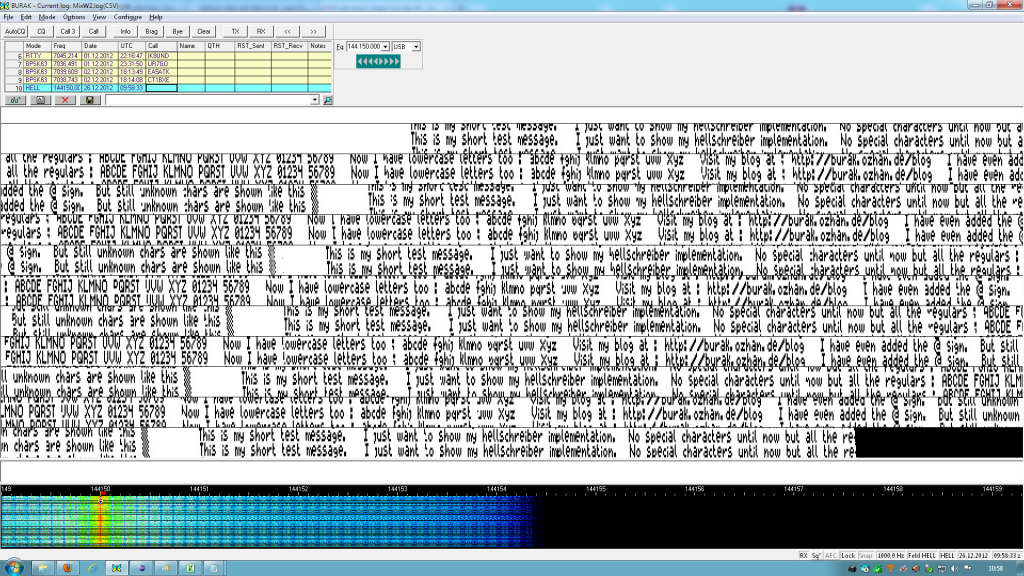So,
I needed a litte bit of distraction. I have been playing around with digital modes for a while, trying to listen on the air and test my own transmissions, of course just as audio recordings without HF. So the time has come to make my first “baby steps” in implementing a digimode.
Today I begun with Hellschreiber. I was inpired by this Project : http://www.swharden.com/blog/2011-08-05-i-before-e-except-after-hellschreiber/ But I did implement Hellschreiber in Java on my PC instead a Microcontroller. Whole implementation till I first saw my message decoded on the screen, took only a couple of minutes since Hellschreiber is really a simple protocol. Here is a picture of the latest Version running in the background and being decoded by MixW.

I have also a audio file that you can play back and decode on your own PC, here: audiofile In fact my code always also produces an acompanying audiofile.
Later I improved the implementation a bit and added more letters and symbols, while I was at it I also added variable width to my output. So the letter I will consume less space as the letter W and wide letters like W, M or O are not squished, they have all the space they need. What is nice about Hellschreiber is that it does define a character set but that is not really fixed. I can add any new symbol or letter, they should even decode propertly on an antique real mechanical Hellschreiber machine. That is a property you won’t find in any other digital mode. Using that, I even added some characters from one of my mother languages, Turkish. They are being decoded properly. Even modern unicode still does not always work as it is supposed to. Here in comparison to the regular letters…
Another funny thing is that you can even do pictograms. Ok, at only 7 pixels height those are very very tiny pictograms but, hey it’s 80 years old technology and extensible as heck !

Also Hellschreiber does not consume any bandwidth or at least it should not. Just like CW, it only switches on and of the transmission power and does not change frequency. Some sources state a “bandwidth” for different Hellschreiber modes, which I don’t quite get why, but I don’t see how a carrier only turned on and of can generate bandwidth…
So much for my Hellschreiber experiments. I would love to test that on a real machine, but I have no idea where to find one.


